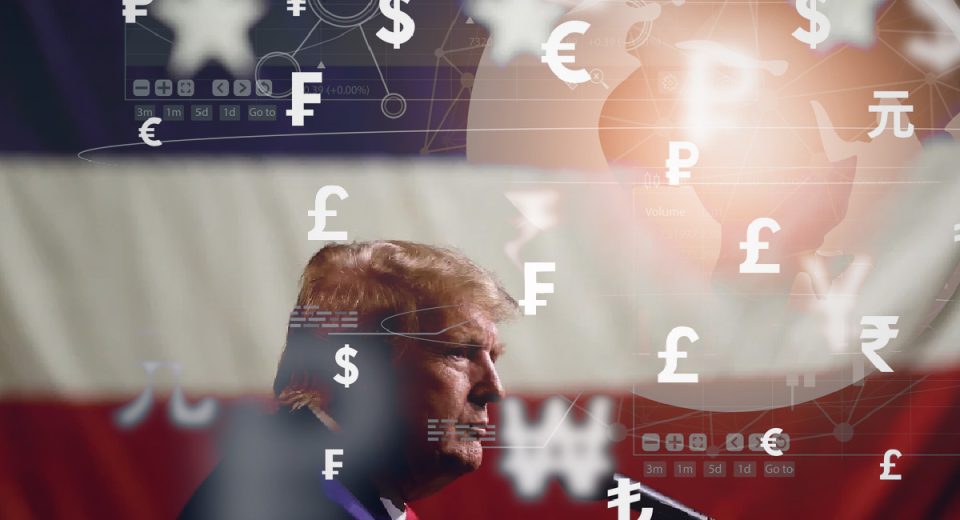India’s Economic Growth Projections: Impact on Markets

After the pandemic, India emerged as a formidable player in the global market, wearing the crown of being the fastest-growing major economy. The country generated gross domestic product (GDP) growth of 8.4% in the October to December 2023 quarter. This pushed the estimate for fiscal 2024 from 7.3% to 7.6%, as per National Statistical Office (NSO).
India’s Growth Projections
In its report named Global Macro Outlook 2024-25, Moody’s Investor Service raised its economic growth projections for India by 70 basis points (bps) to 6.8%. Moody’s also raised its forecast for 2025 to 6.4%, which indicates that India could remain the fastest-growing major economy over that period.
The IMF also raised its fiscal year 2024 projections for India’s GDP growth from 6.3% to 6.7%. Here’s a look at how this growth is expected to impact the global financial markets.
Forex
Trade Growth
India has strong trade relations, as reflected in its free trade agreements (FTAs) with several countries across the globe. The EU, US and UAE are India’s largest trading partners. India has also benefited from the US-China trade wars and souring relationships between Western countries and the Asian dragon. India’s total merchandise exports surged by 6% to a record high of $447 billion in the financial year 2023, bringing the country to par with major manufacturing hubs like Hong Kong, China, Vietnam, and Taiwan.
Growth in exports will create higher demand for the Indian Rupee (INR), strengthening its value in the forex market. The INR/USD touched an all-time low of 83.36 in November 2023 and is widely considered undervalued.
De-dollarisation
Like several other countries, India has been making continuous efforts to reduce its reliance on the US dollar for executing international trade and financial transactions. Currently, countries need to hold significant reserves of US dollars to stabilise their own currency. India has entered into agreements with countries to bypass the greenback and trade directly in INR. This could strengthen the INR/USD forex pair, especially while the US dollar weakens following Fed’s interest rate cuts.
Precious Metals
If India grows as per projections, there could be a surge in the domestic demand for gold and silver from Indian consumers. This could be in the form of the physical metal or derivatives in the commodities market. India’s culture and beliefs drive this. Precious metals are considered safe investments and play an important role as status symbols.
The nominal value of India’s precious metal derivatives market is projected to reach $417.90 billion in 2024 and grow further by a CAGR of 2.00% to touch $452.40 billion by 2028.
Crude Oil
India imports 85% of its oil needs and is the world’s third-largest consumer of this commodity.
Rise in Demand
India’s domestic crude oil production has declined steadily since fiscal year 2012 and the trend is expected to continue. With this, India could continue to increase its imports of oil.
Moreover, healthy economic growth tends to lead to a rise in energy consumption, including oil products like gasoline, diesel, and jet fuel. India is expected to invest heavily in infrastructure development. Its expanding industrial activity and transportation needs will spur the domestic demand for oil-derived fuels. This rapidly rising demand from India could boost global oil prices.
Changing Geopolitics
Given its strengthening relationships with Russia and the Middle East, India may be able to negotiate more favourable pricing for its oil imports. Such potential contracts by the world’s third-largest oil consumer could trigger a ripple effect in the global oil market.
Stock Markets
The Indian stock market gained more than 25% in 2023 to cross the $4 trillion valuation mark. More than 150 new companies were listed in the first nine months of that year. India’s two main stock indices, the Nifty 50 and Sensex, recorded stellar growth, both rising more than 17% in the year.
Despite this phenomenal growth, the Indian stock market barely managed to surpass the valuation of the Hong Kong stock market and remains less than half the size of the Chinese stock market. As the Indian economy grows, the country’s equity market could be action packed.
Foreign Investment Flows
Foreign companies from the advanced economies could set up their manufacturing in India, easing the supply chain concerns. This could boost both Indian and foreign stocks.
Consumer Market
India’s consumer market is poised to grow from the world’s fifth to become the third largest by 2027, with growth in household income, according to a report by BMI. A growing economy and large youth population could continue to drive increased consumer spending. This trend is likely to lend support to both Indian and foreign stocks.
Corporate Earnings of Multinational Companies
Several Indian companies are listed on the US and UK stock markets. India’s gross domestic product growth could spur revenue and profit expansion for these companies, impacting their stock prices.
India’s economic expansion and its performance in the oil, forex, metals, and stock markets could boost sentiment of other emerging economies. This too may cause shifts in the global market dynamics.
To Sum Up
- India is projected to remain the fastest-growing major economy in 2024 and 2025.
- Higher demand for oil from the world’s third-largest consumer could boost crude prices.
- The INR/USD could receive support from India’s economic growth.
- Gold and silver market may also rise as a result of India’s healthy GDP growth.
- Indian and foreign stock markets are likely to be supported by economic growth.
Disclaimer
All data, information, and materials are published and provided “as is’ ‘ solely for informational purposes only and are not intended nor should be considered, in any way, as investment advice, recommendations, and/or suggestions for performing any actions with financial instruments. The information and opinions presented do not take into account any particular individual’s investment objectives, financial situation, or needs, and hence do not constitute advice or a recommendation concerning any investment product. All investors should seek advice from certified financial advisors based on their unique situation before making any investment decisions by their personal risk appetite. Blackwell Global endeavours to ensure that the information provided is complete and correct, but makes no representation as to the actuality, accuracy, or completeness of the information. Information, data, and opinions may change without notice and Blackwell Global is not obliged to update on the changes. The opinions and views expressed are solely those of the authors and analysts and do not necessarily represent those of Blackwell Global or its management, shareholders, and affiliates. Any projections or views of the market provided may not prove to be accurate. Past performance is not necessarily indicative of future performance. Blackwell Global assumes no liability for any loss arising directly or indirectly from the use of or reliance on such information herein contained. Reproduction of this information, in whole or in part, is not permitted.




